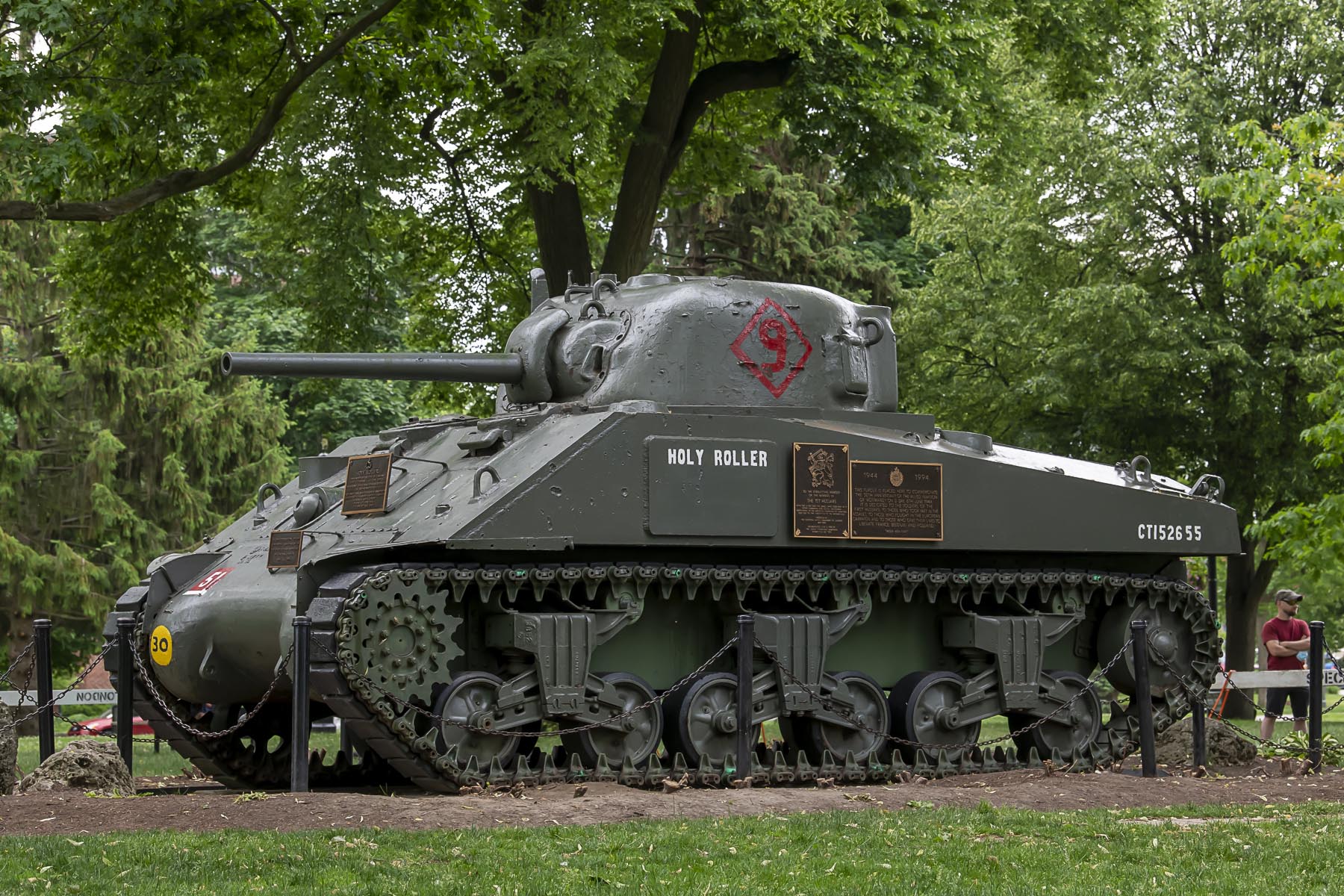The 1st Hussars Association was formed in 1946 by World War II veterans who were interested in forming a regimental association that would allow former members, and those who were currently serving, to meet together. They identified their prime object as “good and welfare.” The association has been active ever since, with new generations of members joining along the way.
Project Summary
Seventy-seven years after moving inland from Juno Beach to support the 1st Hussars advance across Western Europe, the Holy Roller–one of two Canadian Sherman tanks to survive the Second World War–was transported to Fanshawe College to begin a year-long effort to preserve the memorial. Students and faculty from several Fanshawe programs worked together on this Signature Innovative Learning Experience (SILEx) project.
The Challenge
The Holy Roller tank is an important part of Canada’s history. is the only tank of the 1st Hussars, and one of only two Canadian Army Sherman tanks, to have survived the conflicts in Western Europe that began on D-Day and ended when the Second World War ended in May 1945. Due to its national significance, it was turned into a monument to the sacrifices made by Canadian service members and was placed in London’s Victoria Park in 1956. Over the years, the tank fell into disrepair due to time and exposure to the elements. The 1st Hussars launched a fundraising campaign to help pay for repairs, and reached out to Fanshawe to engage faculty and students in the project.

Experts explained that it’s difficult to appreciate the claustrophobic feeling of being inside the tank. The VR experience gives a good idea of what it’s like in there.
The Solution
In summer 2021, the Holy Roller was moved to Fanshawe’s Centre for Applied Transportation Technology. The tank was disassembled, parts were refurbished or replaced and the body was sandblasted and repainted.
Faculty and students from Fanshawe’s School of Transportation Technology and Apprenticeship, including students from the Motive Power Technician and Auto Body Techniques, volunteered to help with the project. Students from other programs got involved as well; for example, students completing a summer work study placement with the School of Contemporary Media used a specialized camera to create an interactive 360-degree view of the tank’s interior. When viewed with a VR headset, the images give viewers the spatial perspective of each crew member.
The project was a success, and the refurbished tank was placed back in Victoria Park in May 2022.
Explore Our Services

Capstone Live Projects

R&D Services

Hire a Student

Hire a Graduate







